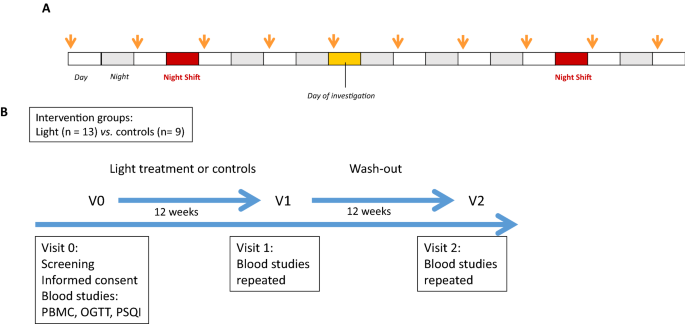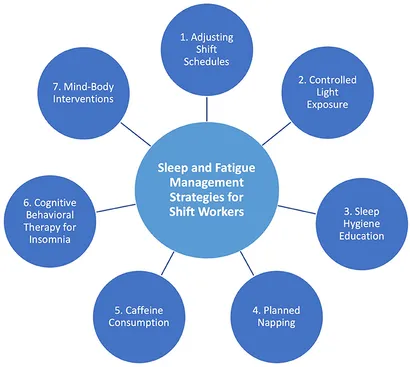The Importance of Light Therapy for Night Workers
Night workers, such as nurses, security guards, and factory workers, often face the challenge of working in environments with limited natural light. This lack of exposure to natural light can disrupt their circadian rhythms, leading to sleep disturbances and other health issues. Light therapy, also known as phototherapy, has been shown to be an effective way to help night workers regulate their sleep-wake cycles and improve their overall well-being.
One of the key benefits of light therapy for night workers is its ability to mimic the natural light-dark cycle. By using specialized light boxes or lamps that emit bright, full-spectrum light, night workers can reset their internal body clocks and promote the production of melatonin, the hormone that regulates sleep. This can help them fall asleep more easily when they finish work and wake up feeling more refreshed and alert.

In addition to improving sleep quality, light therapy has also been shown to have a positive impact on mood and mental health. Many night workers experience feelings of depression, anxiety, and irritability due to their disrupted circadian rhythms. By exposing themselves to bright light at specific times of day, they can stimulate the production of serotonin, a neurotransmitter that helps regulate mood. This can help alleviate symptoms of depression and improve overall mental well-being.
Overall, light therapy is a safe and non-invasive way for night workers to improve their sleep quality, mood, and overall well-being. By incorporating light therapy into their daily routine, night workers can better align their internal body clocks with their work schedules and reduce the negative impact of shift work on their health.
How to Incorporate Light Therapy into Your Night Shift Routine

In order to reap the benefits of light therapy, night workers should establish a consistent routine for using light boxes or lamps. One of the most effective ways to incorporate light therapy into your night shift routine is to use a light box or lamp for 30-60 minutes upon waking up. This can help signal to your body that it is time to wake up and start the day, even if you have just finished working a night shift.
It is also important to use light therapy at the same time each day in order to regulate your circadian rhythms. By exposing yourself to bright light at consistent times, you can help synchronize your internal body clock with your work schedule and improve your overall sleep quality. Many night workers find it helpful to use their light box or lamp in the morning, before going to bed, or during breaks throughout their shift.
In addition to using light therapy at specific times of day, it is also important to create a sleep-friendly environment in order to maximize the benefits of light therapy. This includes keeping your bedroom dark, cool, and quiet, and avoiding screens and stimulating activities before bedtime. By combining light therapy with good sleep hygiene practices, night workers can optimize their sleep quality and overall well-being.
By following these tips and establishing a consistent routine for using light therapy, night workers can effectively regulate their circadian rhythms and improve their sleep quality, mood, and overall well-being.
The Science Behind Light Therapy for Night Workers
Light therapy works by exposing individuals to bright, full-spectrum light that mimics natural sunlight. This type of light is thought to stimulate photoreceptors in the eyes, specifically in the retina, which send signals to the brain’s suprachiasmatic nucleus (SCN). The SCN is responsible for regulating circadian rhythms, which control the body’s sleep-wake cycles, hormone production, and other physiological processes.
When individuals are exposed to bright light, particularly in the morning, it helps signal to the brain that it is time to wake up and start the day. This exposure to light suppresses the production of melatonin, the hormone that regulates sleep, and promotes the production of serotonin, a neurotransmitter that helps regulate mood. By using light therapy at specific times of day, night workers can help synchronize their internal body clocks with their work schedules and improve their overall well-being.
Studies have shown that light therapy can be an effective treatment for a variety of sleep disorders, including insomnia, delayed sleep phase syndrome, and shift work disorder. By using light therapy to regulate their circadian rhythms, night workers can improve their sleep quality, mood, and overall well-being.
Benefits of Light Therapy for Night Workers
There are numerous benefits of light therapy for night workers, including improved sleep quality, mood, and overall well-being. By using light therapy to regulate their circadian rhythms, night workers can align their internal body clocks with their work schedules and reduce the negative impact of shift work on their health.
One of the key benefits of light therapy is its ability to improve sleep quality. Many night workers experience difficulty falling asleep or staying asleep due to their disrupted circadian rhythms. By using light therapy to reset their internal body clocks and promote the production of melatonin, they can improve their sleep quality and wake up feeling more refreshed and alert.
In addition to improving sleep quality, light therapy has also been shown to have a positive impact on mood and mental health. Many night workers experience feelings of depression, anxiety, and irritability due to their disrupted circadian rhythms. By using light therapy to stimulate the production of serotonin, they can alleviate symptoms of depression and improve their overall mental well-being.
Overall, light therapy is a safe and non-invasive way for night workers to improve their sleep quality, mood, and overall well-being. By incorporating light therapy into their daily routine, night workers can better align their internal body clocks with their work schedules and reduce the negative impact of shift work on their health.
Side Effects and Risks of Light Therapy for Night Workers
While light therapy is generally considered safe and effective for most individuals, there are some potential side effects and risks to be aware of. One of the most common side effects of light therapy is eyestrain or headaches, particularly if the light box or lamp is too bright or used for too long. It is important to follow the manufacturer’s instructions for proper use and duration of light therapy in order to minimize the risk of these side effects.
Some individuals may also experience temporary changes in their sleep patterns or mood when first starting light therapy. This is normal and usually resolves within a few days as the body adjusts to the new light-dark cycle. If these changes persist or worsen, it is important to consult with a healthcare provider to determine the best course of action.
In rare cases, individuals with certain medical conditions or medications may experience more serious side effects from light therapy, such as mania or hypomania. It is important to consult with a healthcare provider before starting light therapy, especially if you have a history of bipolar disorder or other mood disorders.
Overall, light therapy is a safe and effective way for night workers to improve their sleep quality, mood, and overall well-being. By following the manufacturer’s instructions and consulting with a healthcare provider if needed, night workers can minimize the risks and side effects of light therapy and reap the benefits of this non-invasive treatment.
How to Choose the Right Light Therapy Device for Night Workers
When choosing a light therapy device for night workers, it is important to consider several factors in order to maximize the benefits of light therapy. One of the key factors to consider is the intensity of the light emitted by the device. Light therapy devices are typically measured in lux, with brighter devices ranging from 2,500 to 10,000 lux. For night workers, it is recommended to choose a device with a higher intensity, such as 10,000 lux, in order to effectively regulate their circadian rhythms and improve their sleep quality.
Another important factor to consider is the type of light emitted by the device. Full-spectrum light, which mimics natural sunlight, is thought to be the most effective type of light for regulating circadian rhythms and improving sleep quality. When choosing a light therapy device, it is important to look for one that emits bright, full-spectrum light in order to maximize the benefits of light therapy for night workers.
It is also important to consider the size and design of the light therapy device. Some devices are compact and portable, making them easy to use at home or at work, while others are larger and more stationary. For night workers, it may be beneficial to choose a portable device that can be easily incorporated into their daily routine, such as using it upon waking up or during breaks throughout their shift.
By considering these factors and choosing a light therapy device that meets their individual needs, night workers can effectively regulate their circadian rhythms and improve their sleep quality, mood, and overall well-being.
Conclusion
In conclusion, light therapy is a safe and effective way for night workers to improve their sleep quality, mood, and overall well-being. By using specialized light boxes or lamps that emit bright, full-spectrum light, night workers can regulate their circadian rhythms, promote the production of melatonin, and improve their overall well-being.
By establishing a consistent routine for using light therapy, incorporating good sleep hygiene practices, and choosing the right light therapy device, night workers can optimize their sleep quality and align their internal body clocks with their work schedules. Overall, light therapy is a valuable tool for night workers to combat the negative effects of shift work and improve their overall health and well-being.
Leave a Reply